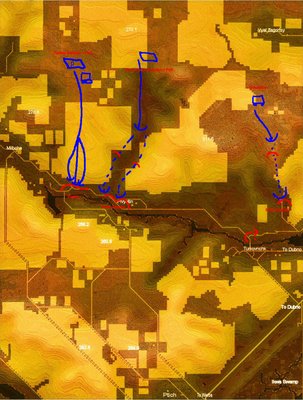Ozgurnikov reports...
As 2nd tank regiment started its engines,we realized that a group of enemy infantry has dug in the hamlet that was previously the HQ of the Corps. Quickly, the support company and the HQ defense platoon opened fire on the intruders. Those guns of the AA bn that can bear on the enemy also gave their support. However, it soon became apparent that the enemy was more than a mere platoon and was dug deeply in the area. Apparently, Germans infiltrated in the darkness and found themselves directly behind our lines. We believe that there are about a company of the Germans in the area and they seem to be equipped with their AT rockets.I am detailing the parts of 1nd Naval Inf Bn and 1st Mnt. Bn. to clean the area.
At the same time, we have spotted a group of assault guns heading in the direction of the village, obviously trying to lend support to their infantry. Immediately our 2nd TD Company made of SU85's moved in to hulldown positions. In the ensuing long range AT fire exchange we killed 6 or 7 Assault guns and one unidentified SP.
The tank regiment situated in the village,alerted by these developments pressed on to the help of the men in the hamlet and started giving gun fire support to the efforts to push the German infantry back.
I would like to point out that the 2nd TD company with their 85mm guns actually did a far better job than the 1st TD company armed with 122mm guns. It also deserves mention that even at a range of about 800 meters they managed to score repeatedly on their enemies. Their sloped upper hulls also helped them to survive several hits.
We believe that the enemy now realized that he can continue the attack in this direction only with the help better armored tanks and we are expecting to encounter them soon.
signed
Colonel Ozgurnikov

